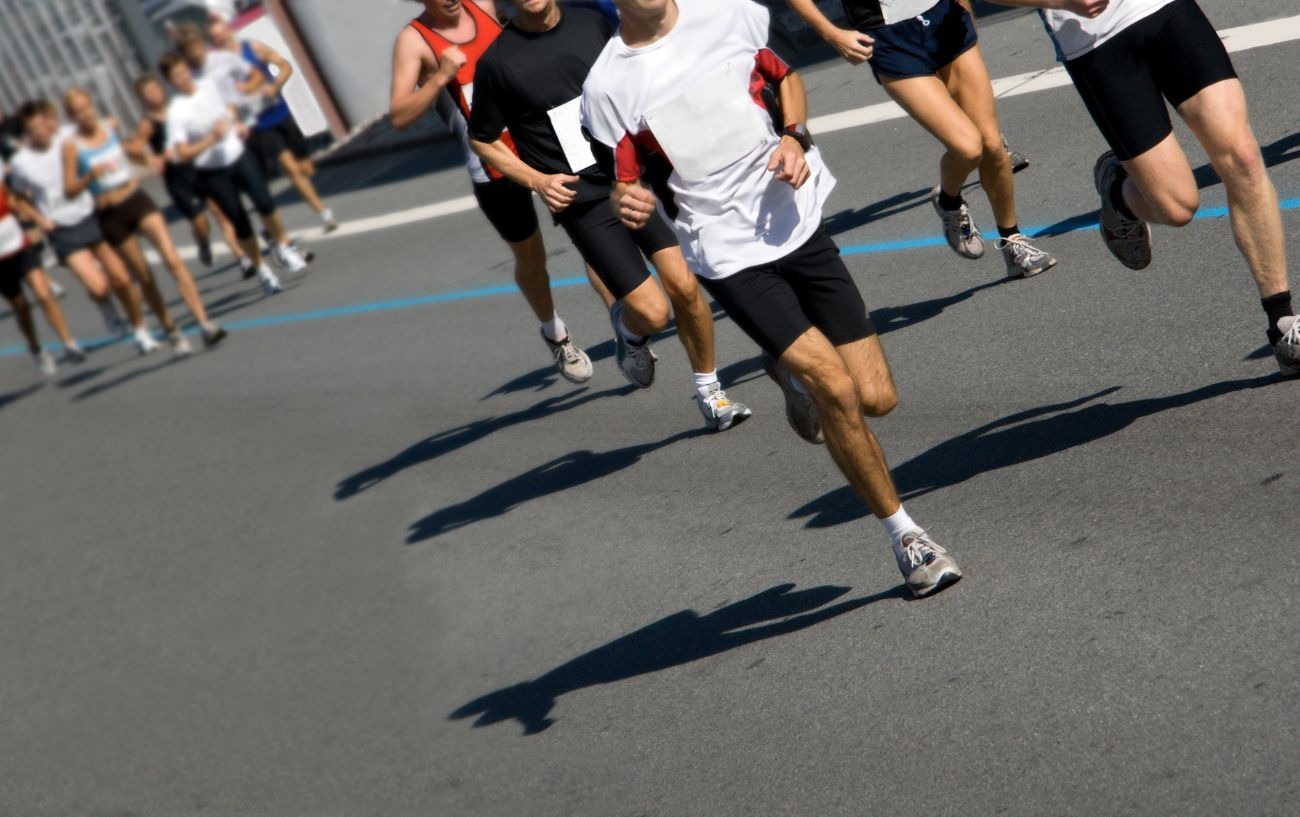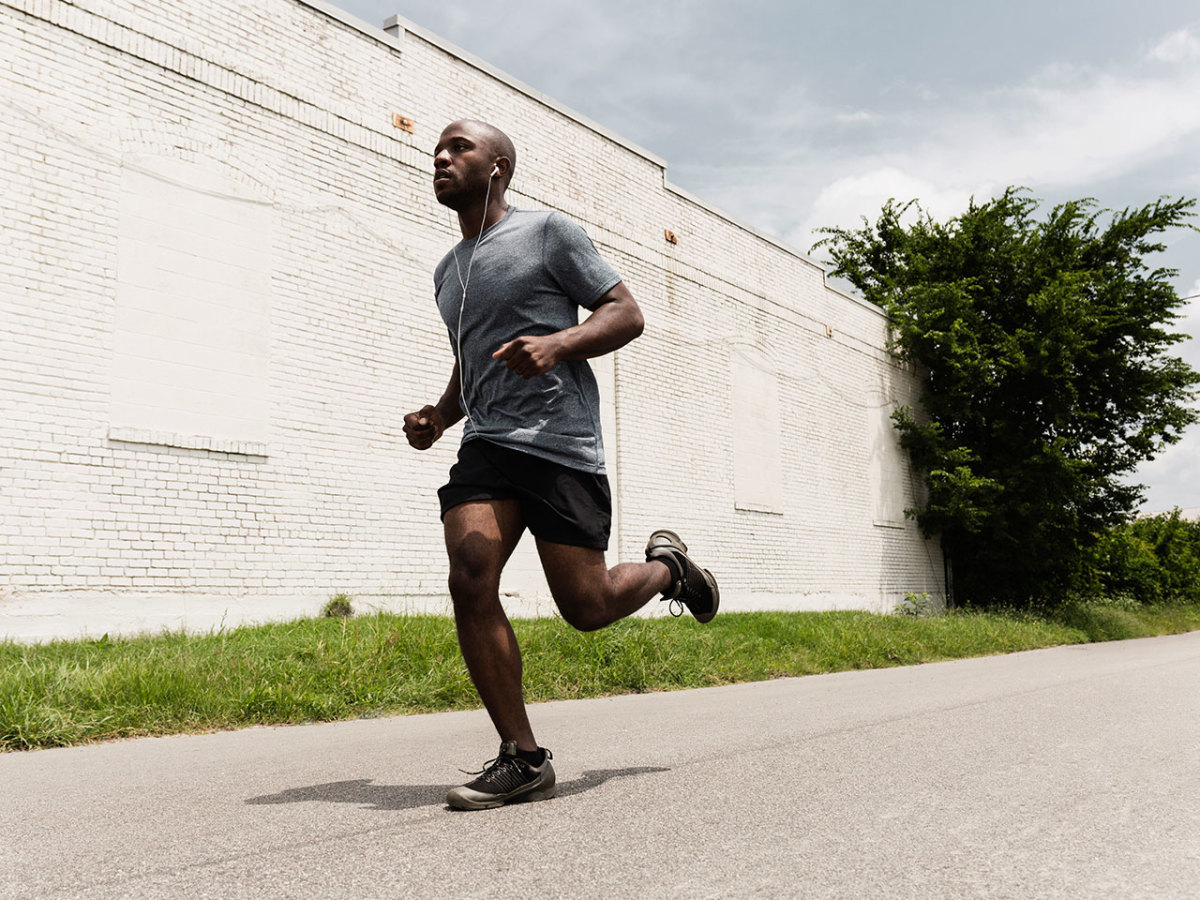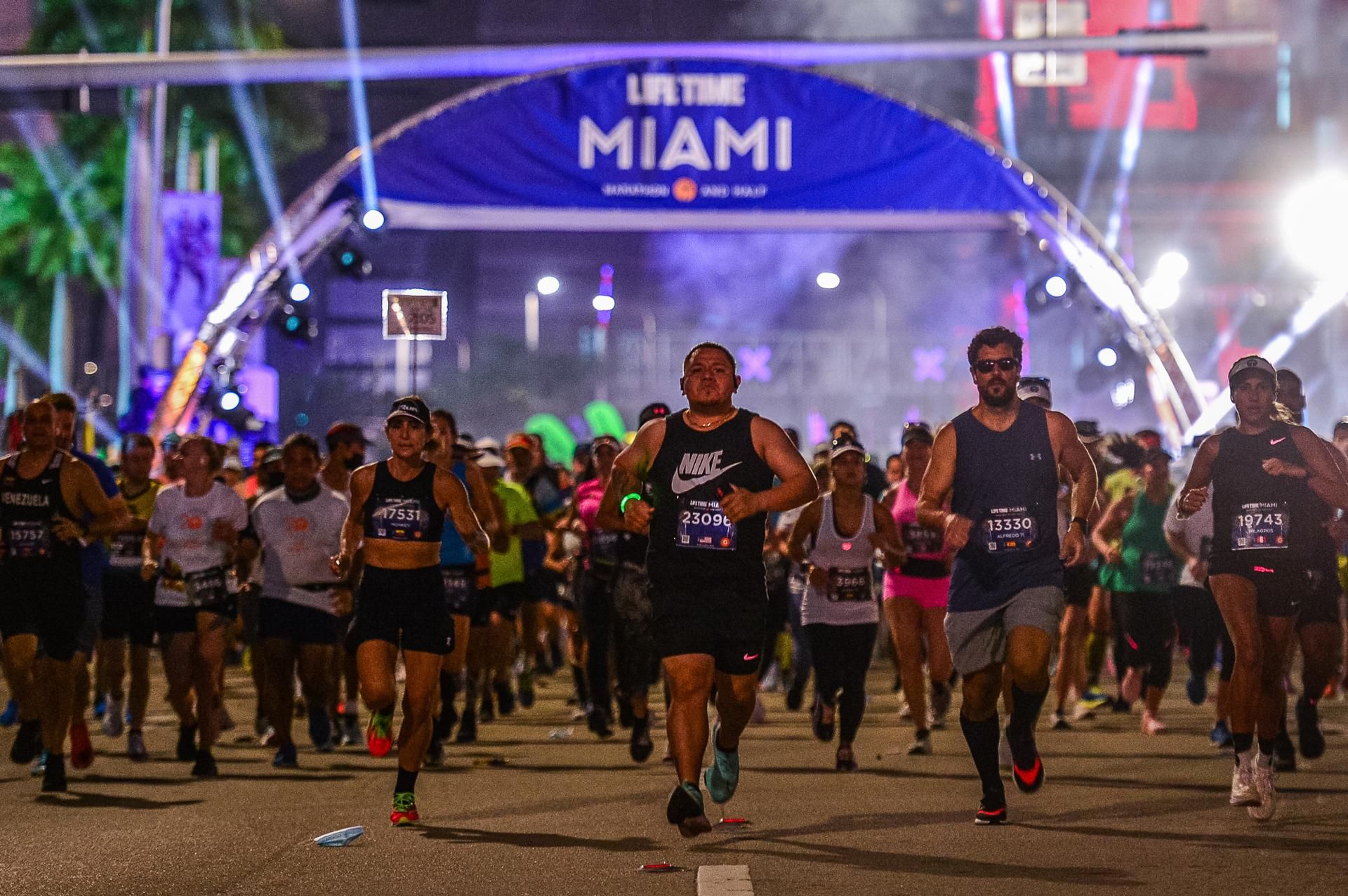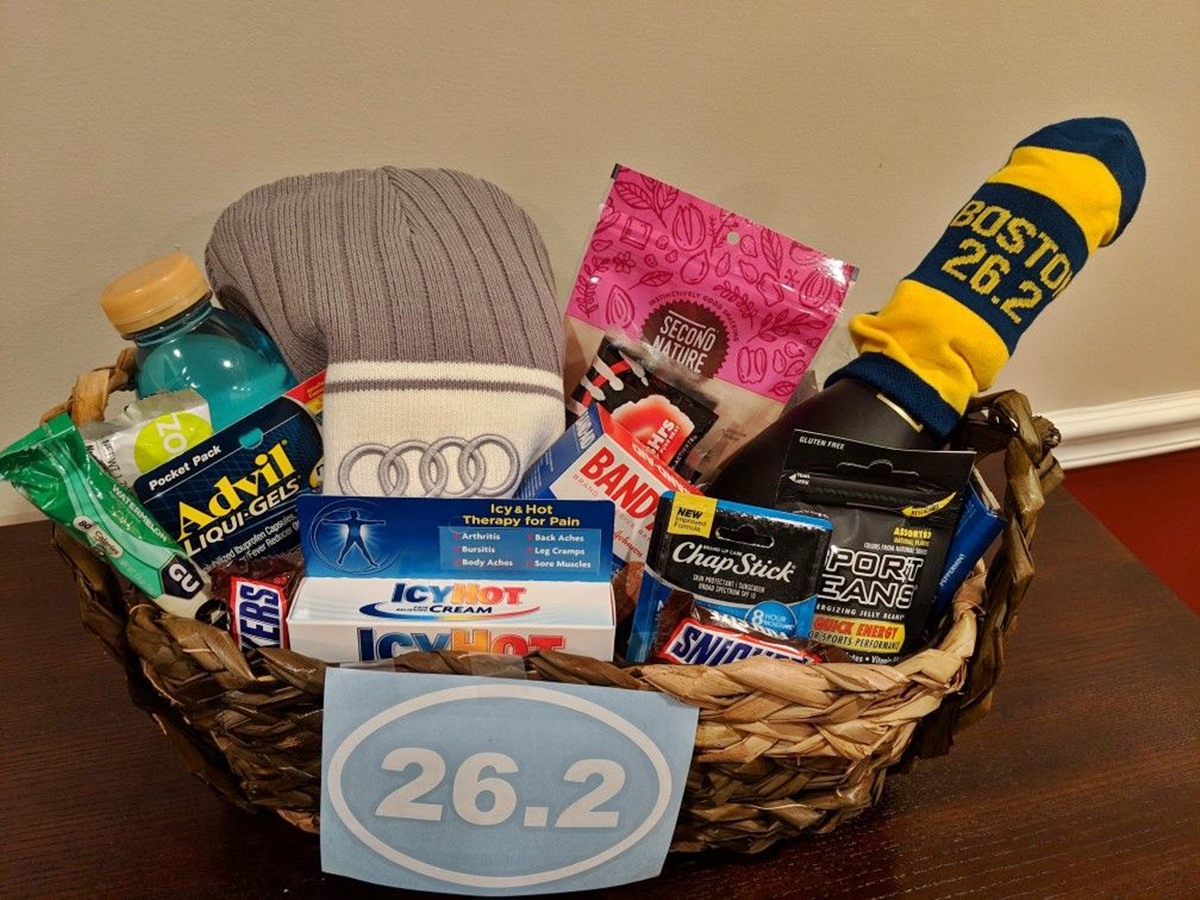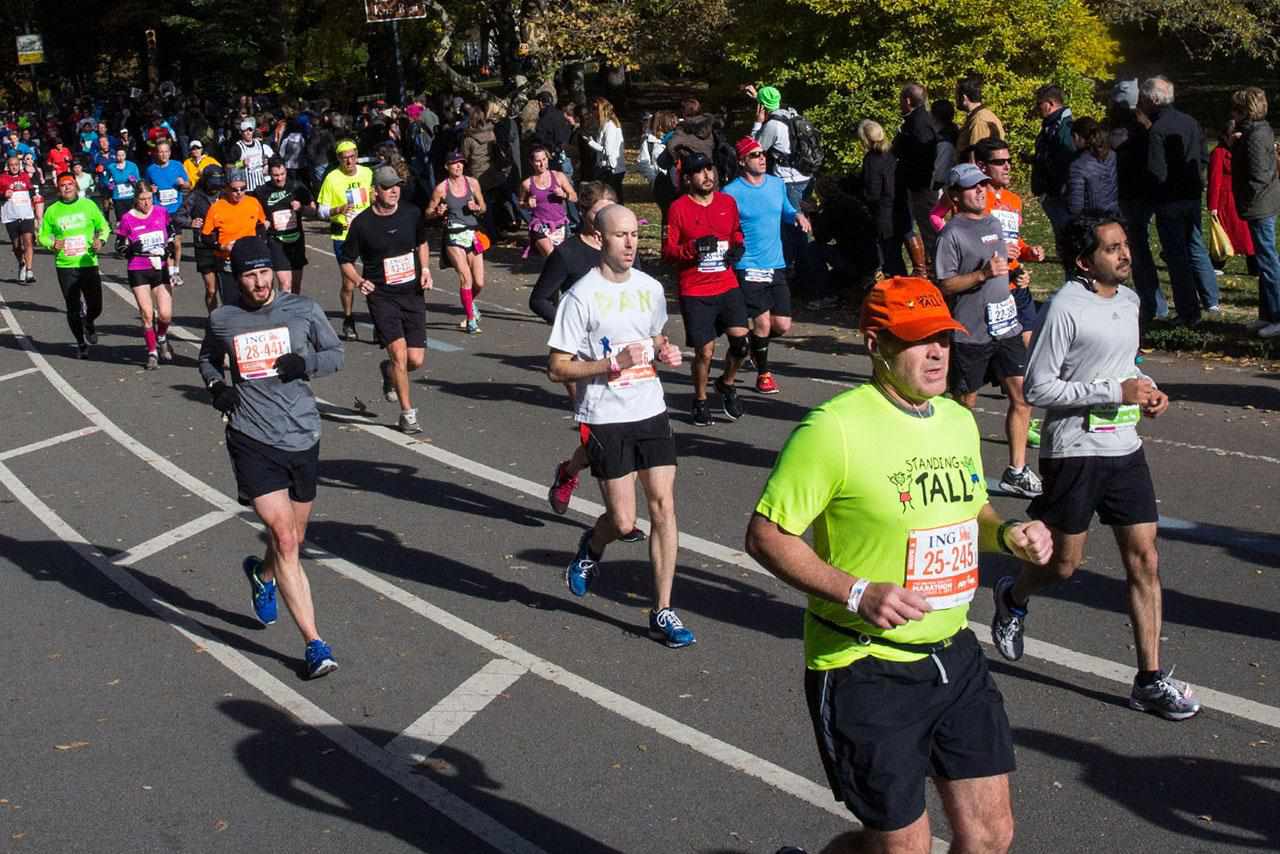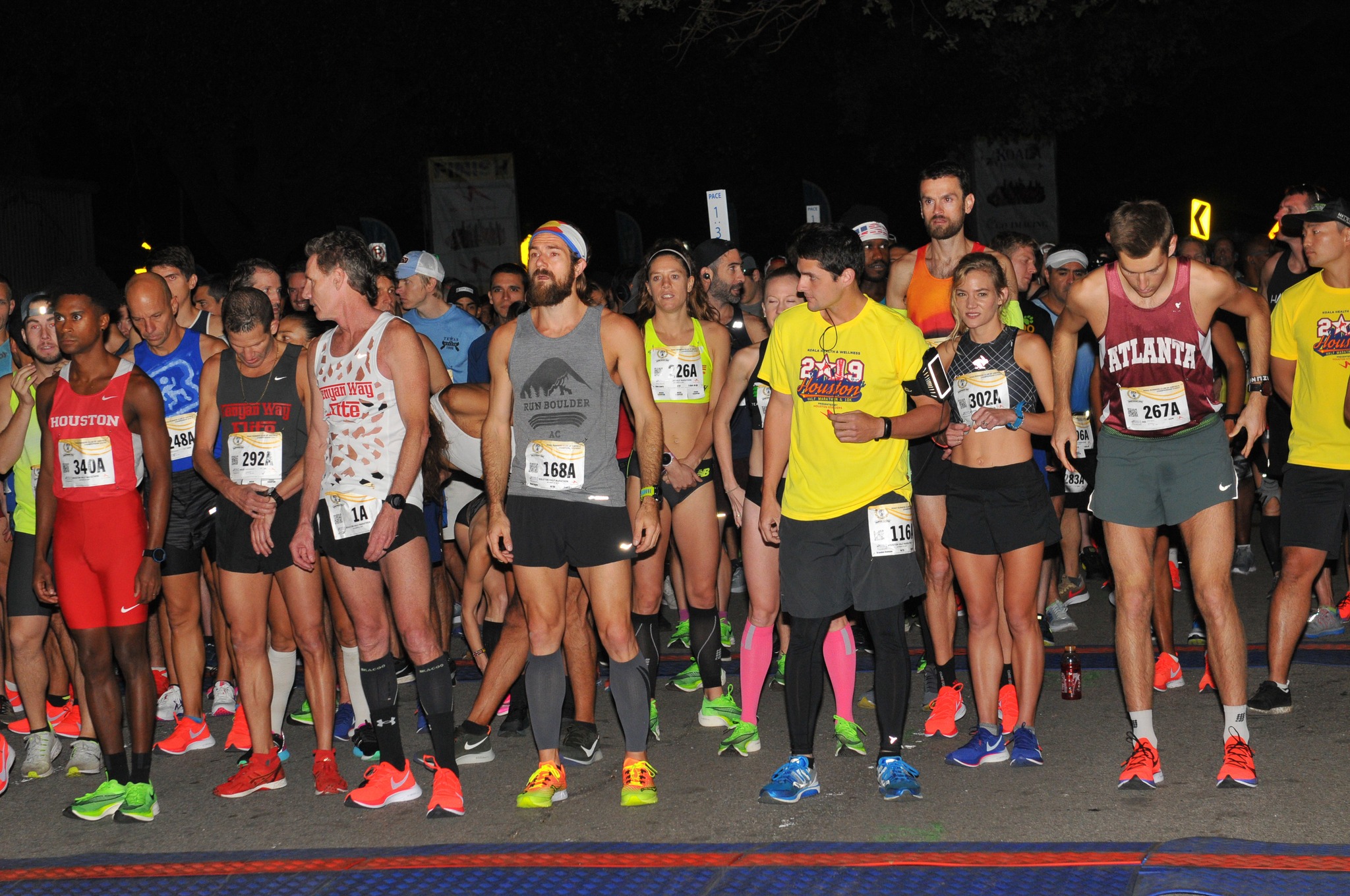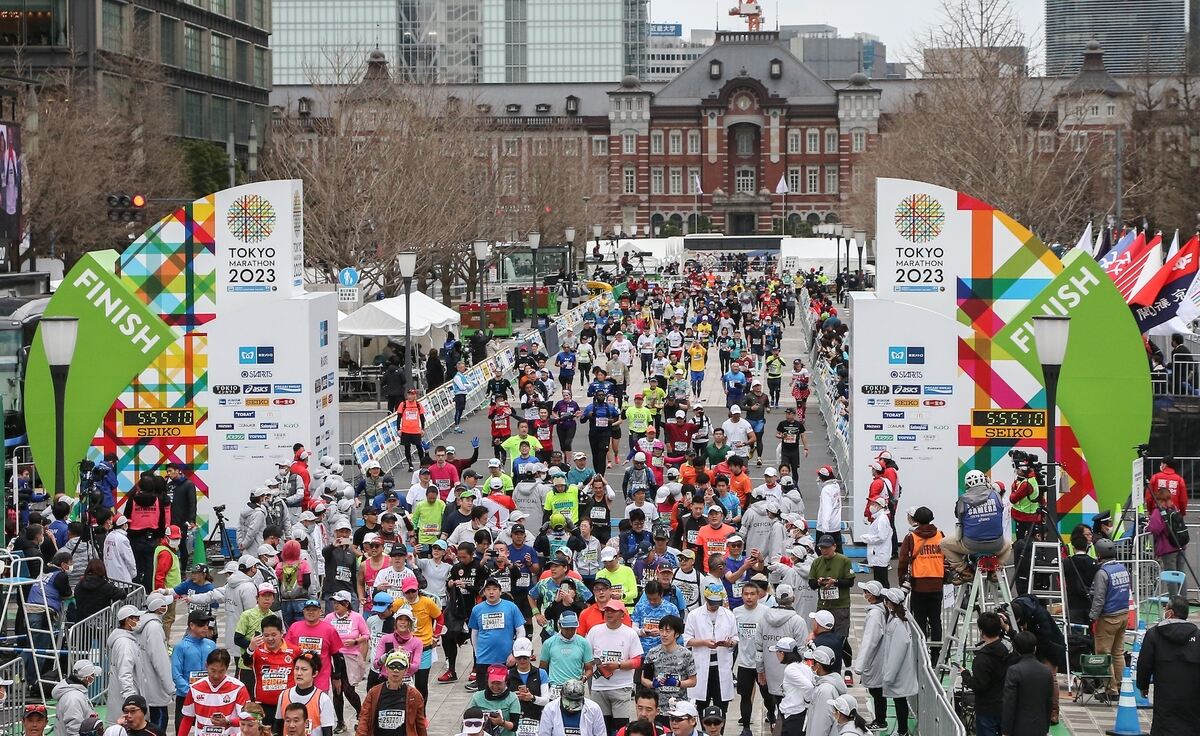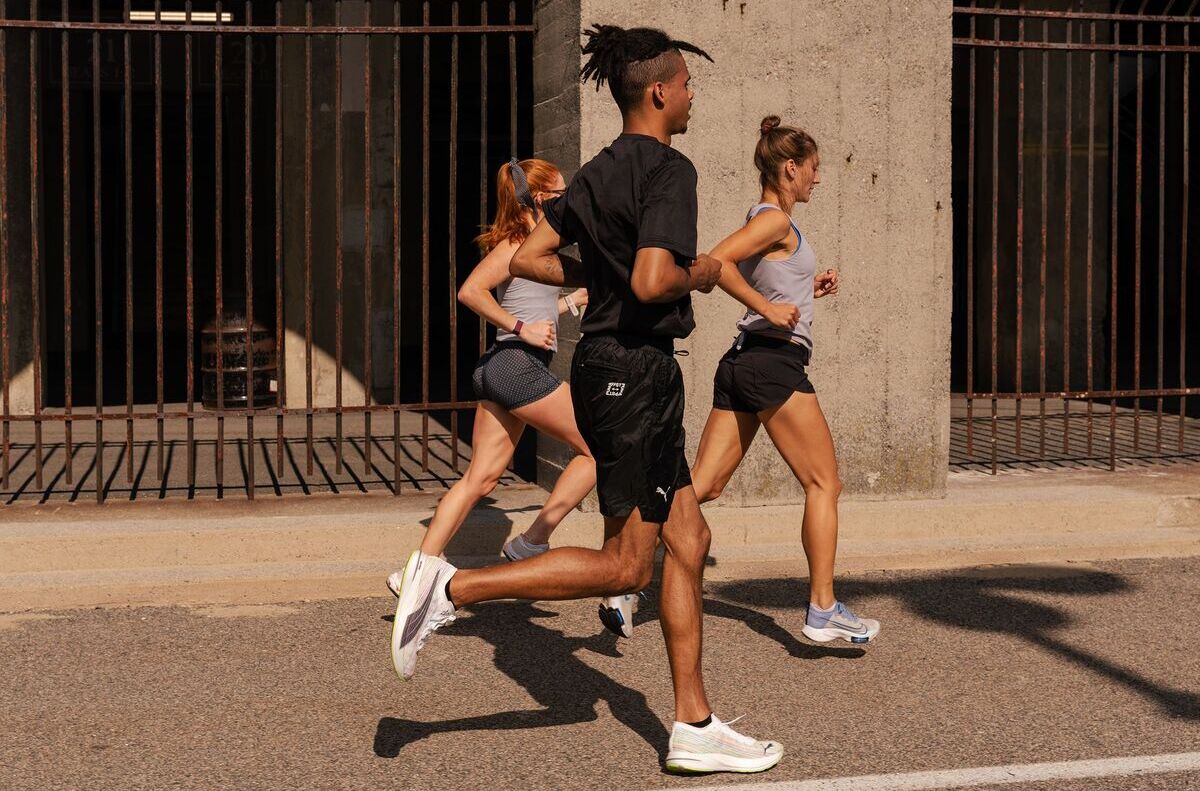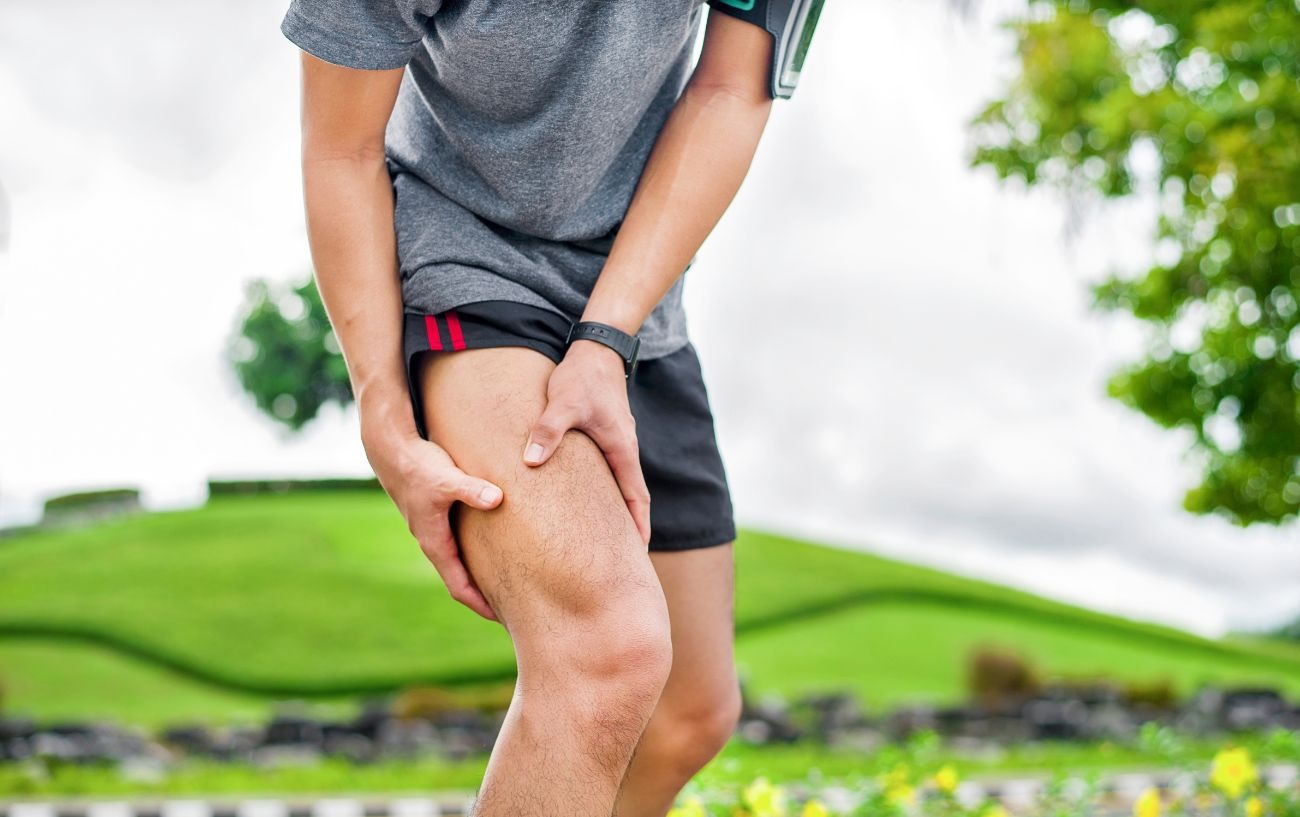Home>Misc>Featured>What To Wear For Half Marathon In 50-Degree Weather
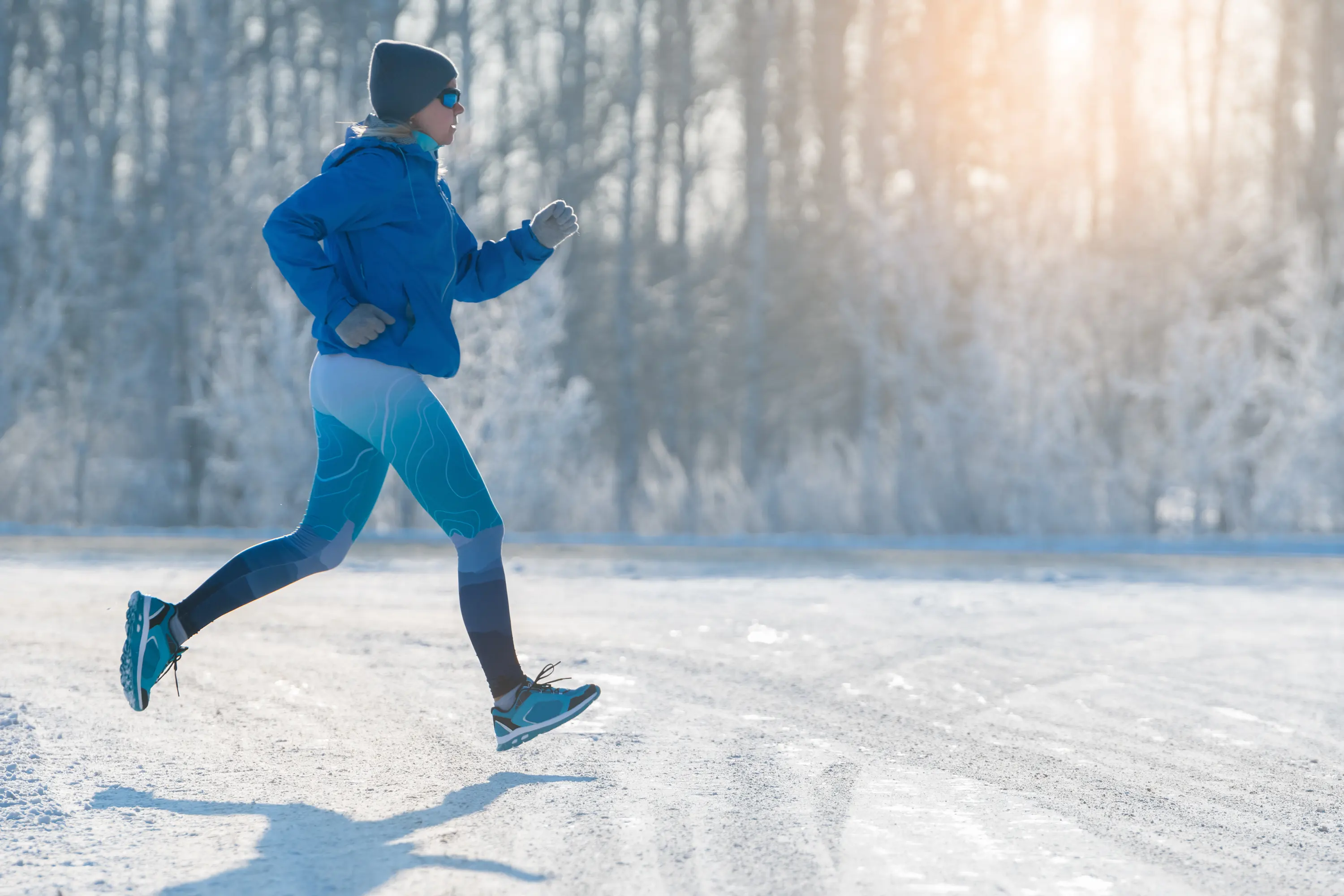

Featured
What To Wear For Half Marathon In 50-Degree Weather
Modified: January 22, 2024
Prepare for your half marathon in 50-degree weather with our featured clothing recommendations. Stay comfortable and stylish throughout your run.
Introduction
Welcome to the exhilarating world of half marathon running! As you embark on this challenging and rewarding journey, it’s essential to ensure that you are properly equipped with the right clothing to optimize your performance and comfort. One crucial factor to consider when preparing for a half marathon is the weather conditions. In this article, we will focus on the specific clothing requirements for running a half marathon in 50-degree weather.
Running in 50-degree weather presents a unique set of challenges. It’s important to strike a balance between staying warm enough at the start of the race and preventing overheating once you’ve built up momentum. Finding the right clothing and layering options tailored to this temperature range is key to achieving optimal performance and avoiding discomfort during the race.
Proper clothing choices can significantly impact your ability to run comfortably and improve your overall performance. By wearing the correct attire, you can regulate your body temperature, protect yourself from the elements, and minimize the risk of injury. This article will guide you through the essential factors to consider when selecting suitable running attire for a half marathon in 50-degree weather. With the right clothing, you’ll feel confident and ready to conquer the race.
Importance of Proper Clothing for Half Marathon Running
When it comes to running a half marathon, choosing the right clothing is more than just a fashion statement. It plays a crucial role in your performance, comfort, and overall running experience. Here are several reasons why wearing proper attire is essential for half marathon running:
- Temperature Regulation: Running in 50-degree weather requires balancing warmth and breathability. Proper clothing helps regulate body temperature by providing insulation when needed and allowing sweat to evaporate, preventing overheating.
- Moisture Management: Running for an extended period can lead to significant sweating. Proper clothing made of moisture-wicking materials helps to keep your skin dry, reducing the risk of chafing, blisters, and discomfort.
- Protection from the Elements: The weather conditions during a half marathon can vary. Proper clothing ensures protection from wind, rain, and chilly temperatures, keeping you comfortable throughout the race.
- Enhanced Performance: When you’re comfortable in your clothing, you can focus more on running and less on distractions. Well-fitting attire allows for a full range of motion without restrictions, optimizing your performance and preventing unnecessary muscle fatigue.
- Injury Prevention: The right clothing not only supports your muscles but also minimizes the risk of common running injuries. Compression garments, for instance, can help improve blood circulation and reduce muscle soreness.
Choosing the proper clothing for your half marathon is a crucial part of your training. It’s essential to invest in quality running gear that meets your specific needs and preferences. By recognizing the importance of proper attire, you can maximize your comfort, reduce the risk of injury, and achieve your goals during the race.
Factors to Consider when Choosing Running Attire
When selecting running attire for a half marathon in 50-degree weather, there are several important factors to consider. These factors will ensure that you stay comfortable, regulate your body temperature, and perform at your best. Here are the key elements to keep in mind when choosing your running attire:
- Temperature and Weather Conditions: Understand the specific weather conditions for the race day. Check the forecasted temperature, wind speed, and any potential precipitation. This information will guide you in selecting the appropriate clothing layers.
- Material and Fabric: Opt for moisture-wicking fabrics that help draw sweat away from your skin, keeping you dry and comfortable. Look for materials like polyester or merino wool that provide insulation while allowing breathability.
- Layering Options: Layering is crucial for adapting to changing weather conditions during a half marathon. Choose lightweight base layers that can be easily combined with mid-layers and outer shells to adjust to temperature fluctuations.
- Fit and Comfort: Select running attire that offers a comfortable and unrestricted fit. Avoid overly tight or loose clothing that can cause chafing or restrict your movement. Test your gear during training runs to ensure a comfortable fit.
- Visibility and Safety: If you’re running in low light conditions, consider choosing clothing with reflective elements that enhance your visibility to drivers and other runners. Safety should always be a top priority.
- Performance Features: Look for additional features in your running attire such as pockets for storing small essentials, thumbholes for added hand warmth, or vents for improved breathability. These features can enhance your running experience.
- Personal Preference: Ultimately, selecting running attire is a personal choice. Consider your own preferences, whether it’s a particular brand, color, or style that motivates and inspires you to run your best.
By carefully considering these factors, you can make informed choices when selecting your running attire for a half marathon in 50-degree weather. Remember to test your outfits during training runs to ensure they meet your comfort and performance needs.
Base Layer Options for 50 Degree Weather
When preparing for a half marathon in 50-degree weather, the base layer you choose is vital for regulating your body temperature and keeping you comfortable throughout the race. The base layer sits directly against your skin and helps manage moisture while providing insulation. Here are some base layer options to consider:
- Lightweight Long-Sleeve Shirt: A lightweight, moisture-wicking, long-sleeve shirt made of a breathable fabric like polyester or merino wool is an excellent choice for 50-degree weather. It offers a balance between insulation and breathability, keeping you comfortable during the race.
- Short-Sleeve Shirt with Arm Warmers: If you prefer the freedom of running in a short-sleeve shirt, pair it with removable arm warmers. This combination gives you the flexibility to adjust your clothing as your body temperature fluctuates throughout the race.
- Compression Top: Compression tops are designed to provide support, increase blood circulation, and reduce muscle fatigue. They offer a snug fit that helps wick away sweat and regulate your body temperature, making them an excellent choice for 50-degree weather.
- Thermal Tech Top: For colder mornings or windier conditions, consider a thermal tech top that provides extra insulation. These tops are designed with specialized fabric that traps heat close to your body, keeping you warm and comfortable.
When choosing a base layer, consider the fit and fabric. Look for garments that offer a comfortable, non-restrictive fit and prioritize moisture-wicking properties. Avoid cotton as it tends to hold onto moisture and can leave you feeling damp and chilly during the race.
Remember, base layers should act as a foundation for your running attire. They should provide adequate insulation and moisture management while allowing you to layer additional clothing as needed. By selecting the right base layer, you’ll create a solid foundation for staying comfortable and performing at your best during a half marathon in 50-degree weather.
Choosing the Right Tops and Bottoms
When preparing for a half marathon in 50-degree weather, selecting the right tops and bottoms is essential for comfort and performance. These clothing items should provide the necessary insulation, breathability, and freedom of movement. Here are some tips for choosing the right tops and bottoms:
- Tops: Choose lightweight, long-sleeve tops made of moisture-wicking materials like polyester or merino wool. These fabrics will keep you dry and comfortable during the race. Look for tops with ventilation panels or mesh inserts to enhance breathability.
- Bottoms: Opt for running tights, leggings, or shorts made of moisture-wicking and stretchy materials. The length of your bottoms will depend on personal preference, but consider the weather conditions. If it’s cooler, longer tights or leggings can provide extra warmth.
- Layering: Depending on the temperature, consider layering your tops with a lightweight running jacket or vest that you can easily remove and tie around your waist as you warm up during the race. This allows for flexibility and adaptability to changing weather conditions.
- Fit: Ensure that your tops and bottoms have a comfortable fit without being too tight or too loose. Well-fitting clothing reduces the risk of chafing and allows for a full range of movement. Test your gear during training runs to ensure a proper fit.
- Visibility: Especially if you’re running in low light conditions, opt for tops or bottoms with reflective details that enhance your visibility to others. Safety should always be a top priority when selecting running attire.
Keep in mind that everyone’s comfort level is different, so it’s essential to find what works best for you. Experiment with different tops and bottoms during your training runs to see what provides the right amount of insulation and breathability.
Remember, proper clothing choices can significantly impact your overall performance and comfort during a half marathon. By choosing the right tops and bottoms, you’ll feel confident, protected, and ready to tackle the 50-degree weather on race day.
Selecting the Appropriate Footwear
Choosing the right footwear is crucial for half marathon running, particularly when facing 50-degree weather. Your shoes should provide the necessary support, cushioning, and traction to keep you comfortable and prevent injuries. Here are some factors to consider when selecting the appropriate footwear:
- Comfort: Look for shoes that fit well and provide ample cushioning. Comfort is paramount for running long distances, as ill-fitting or uncomfortable shoes can lead to blisters, hot spots, and discomfort during the race.
- Support: Depending on your foot type and running gait, consider shoes that offer the appropriate level of support. Whether you need neutral cushioning, stability, or motion control, find shoes that align with your specific needs to prevent overpronation or underpronation.
- Weather Resistance: Select shoes with weather-resistant features, such as water-resistant uppers or outsoles with reliable traction. This is especially important if you anticipate running in wet or slippery conditions.
- Breathability: Look for shoes with breathable materials that allow airflow, helping to manage moisture and keep your feet dry. Adequate breathability can alleviate discomfort and prevent blisters caused by sweat build-up.
- Weight: Consider the weight of the shoes. Lightweight options can enhance your speed and agility during the race. However, be mindful of finding the right balance between lightweight design and necessary cushioning for longer runs.
- Fit: Make sure your shoes have a proper fit, with enough room in the toe box to accommodate slight swelling during the race. Your shoes should feel secure and not overly tight or loose.
- Break-In Period: It is important to wear your new shoes for a few training runs before the actual race. This ensures that you have sufficient time to break them in and identify any areas of discomfort or fit issues.
Remember, every runner has different preferences and foot characteristics, so what works for others may not necessarily work for you. It’s essential to try on and test different shoe models to find the one that feels most comfortable and supportive for your feet.
By selecting the appropriate footwear for your half marathon in 50-degree weather, you’ll ensure that your feet stay comfortable, supported, and injury-free throughout the race, allowing you to focus on achieving your running goals.
Accessories and Extras for Comfort and Performance
In addition to selecting the right clothing and footwear, incorporating accessories and extras into your running attire can further enhance your comfort and performance during a half marathon in 50-degree weather. Here are some accessories to consider:
- Headwear: A lightweight hat, visor, or headband can help keep sweat out of your eyes and protect you from the sun. Choose materials that are breathable and moisture-wicking.
- Gloves: In cooler temperatures, wearing lightweight running gloves can help keep your hands warm without compromising dexterity. Look for gloves that are touch-screen compatible to easily use your devices if needed.
- Arm Sleeves: Arm sleeves provide added warmth without the need for an extra layer. They can easily be rolled up or down depending on temperature fluctuations during the race.
- Compression Socks or Sleeves: Compression socks or calf sleeves can aid in improving circulation and reducing muscle fatigue. They can also provide added support and protection for your lower legs.
- Hydration Gear: Ensure you have a reliable hydration system in place during the race. Whether it’s a handheld water bottle, hydration belt, or hydration pack, staying properly hydrated is crucial for performance and endurance.
- Sunglasses: Protect your eyes from the sun, wind, and debris with sunglasses that offer UV protection and a secure fit. Look for lightweight frames and lenses that won’t fog up during the race.
- GPS Watch or Fitness Tracker: Keep track of your pace, distance, and other performance metrics using a GPS watch or fitness tracker. This can help you gauge your progress and adjust your effort accordingly.
- Anti-Chafing Products: To prevent discomfort and chafing, consider using anti-chafing balms or creams on areas prone to friction, such as thighs, underarms, and nipples.
These accessories and extras can significantly improve your comfort, performance, and overall running experience during a half marathon. Experiment with different options during your training runs to determine which accessories work best for you.
Remember to not overload yourself with unnecessary accessories. Choose the ones that will have the most impact on your comfort and performance while keeping your overall race goals in mind.
By incorporating these accessories and extras into your running attire for a half marathon in 50-degree weather, you’ll be well-equipped to tackle the race with confidence and maximize your performance.
Tips for Layering in 50 Degree Weather during a Half Marathon
Layering your clothing appropriately is crucial when running a half marathon in 50-degree weather. It allows you to adjust your outfit as your body temperature fluctuates throughout the race. Here are some useful tips for effective layering:
- Start with a Base Layer: Begin with a lightweight, moisture-wicking base layer that offers both insulation and breathability. This layer should effectively manage moisture and keep you dry throughout the race.
- Add a Mid-layer: Depending on the temperature, consider adding a mid-layer such as a long-sleeve shirt or lightweight running jacket. This layer can provide additional warmth during the cooler parts of the race.
- Consider Removable Layers: Opt for removable layers like arm warmers or a lightweight vest. These pieces allow you to easily add or remove them as the temperature changes during the race.
- Think About Ventilation: Look for clothing with ventilation features like mesh inserts or zippered vents. These allow for better airflow and temperature regulation, preventing overheating during the race.
- Pay Attention to Fabric Weight: Choose clothing made from lightweight materials for your base and mid-layers. It should provide adequate insulation without adding unnecessary weight that could hinder your performance.
- Be Mindful of Sweat: Avoid cotton clothing, as it tends to retain moisture. Opt for moisture-wicking fabrics that pull sweat away from your body and dry quickly, keeping you comfortable and reducing the risk of chafing.
- Consider Accessories: Accessories like arm sleeves or gloves can provide extra warmth without the need for additional layers. These removable pieces can be easily taken off or put on as needed.
- Test Your Layering: During your training runs, test different layering combinations to find what works best for you. Pay attention to how you feel and make adjustments as necessary.
Remember that layering is about finding the right balance between warmth and breathability. You want to create an outfit that keeps you comfortable throughout the race without causing overheating or discomfort.
By following these tips for layering in 50-degree weather during a half marathon, you can ensure that you’re prepared for the varying temperature conditions and perform at your best throughout the race.
Conclusion
Preparing for a half marathon in 50-degree weather requires careful consideration of your running attire. By choosing the right clothing, you can maintain optimal comfort, improve your performance, and protect yourself from the elements. Follow these key guidelines to ensure you are well-prepared:
First and foremost, understand the importance of proper clothing. It not only regulates your body temperature but also enhances your performance and reduces the risk of injury. Consider the specific weather conditions and select materials that are moisture-wicking, breathable, and provide the necessary insulation.
When choosing your tops and bottoms, prioritize comfort, fit, and functionality. Opt for lightweight long-sleeve shirts, moisture-wicking shorts or tights, and layering options that allow you to adapt to changing temperatures. Don’t forget about selecting appropriate footwear that provides the necessary support and traction for a half marathon.
Accessorizing with items such as headwear, gloves, arm sleeves, and sunglasses can further enhance your comfort and protect you from the elements. Consider the need for hydration gear, visibility-enhancing accessories, and anti-chafing products to ensure a smooth and enjoyable race.
Lastly, remember to carefully layer your clothing to adapt to the 50-degree weather during the race. Start with a moisture-wicking base layer and build up with removable layers that can be easily adjusted or removed as needed. Test your layering combinations during training runs to fine-tune your outfit.
By following these guidelines and tailoring them to your personal preferences, you’ll be well-prepared and confident to tackle a half marathon in 50-degree weather. Keep in mind that the goal is to find the right balance between comfort, breathability, and insulation throughout the race.
Now that you have the knowledge and insight, it’s time to hit the pavement, embrace the challenge, and conquer that half marathon. Remember to enjoy the experience, stay hydrated, and listen to your body’s cues. Best of luck on race day!
